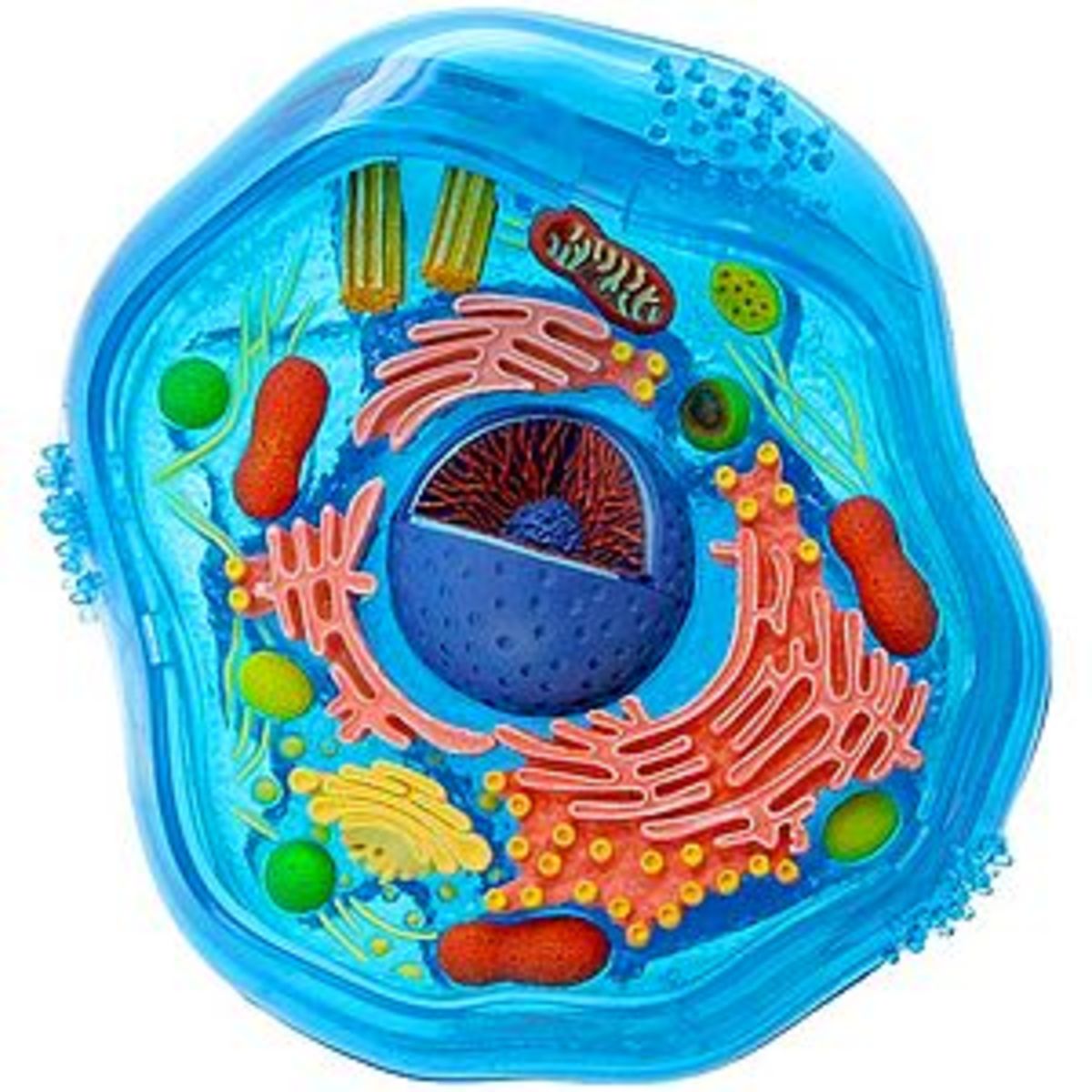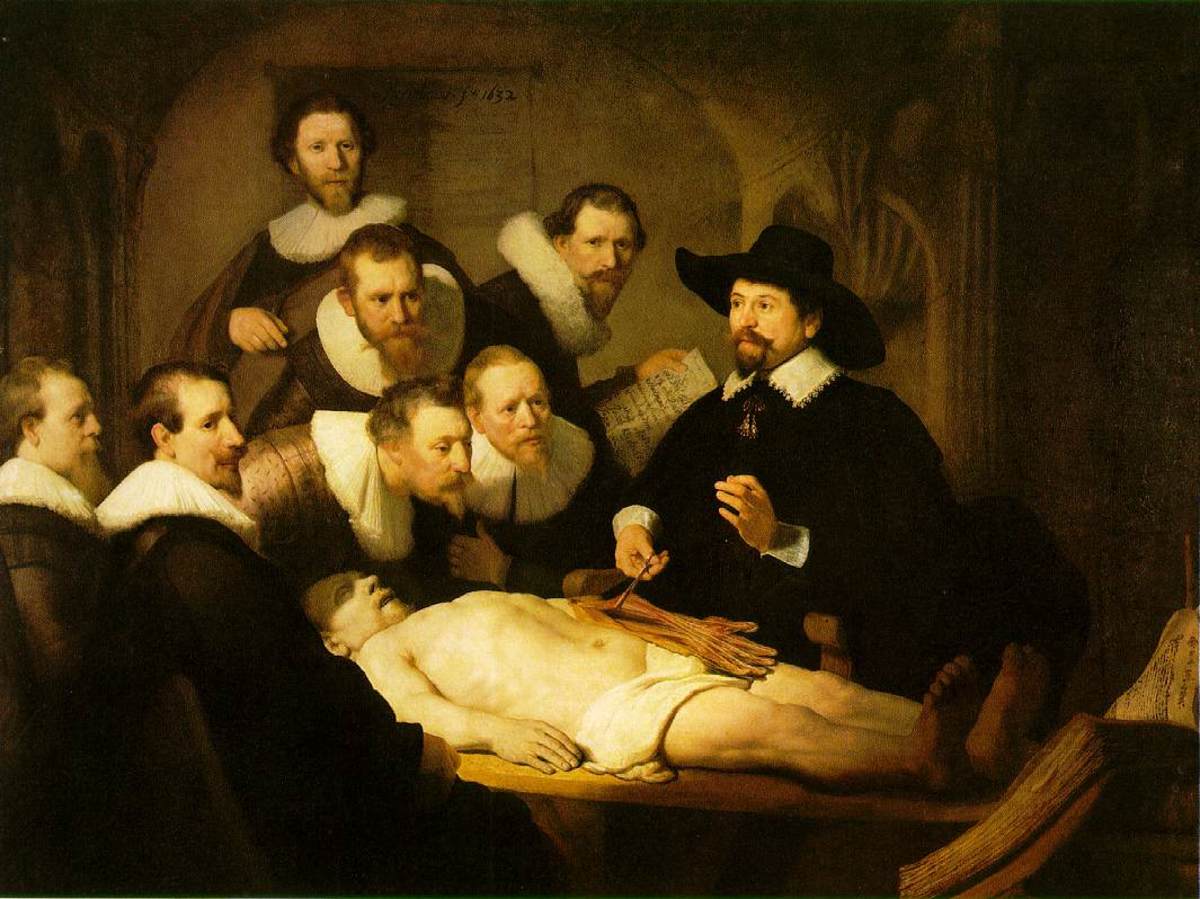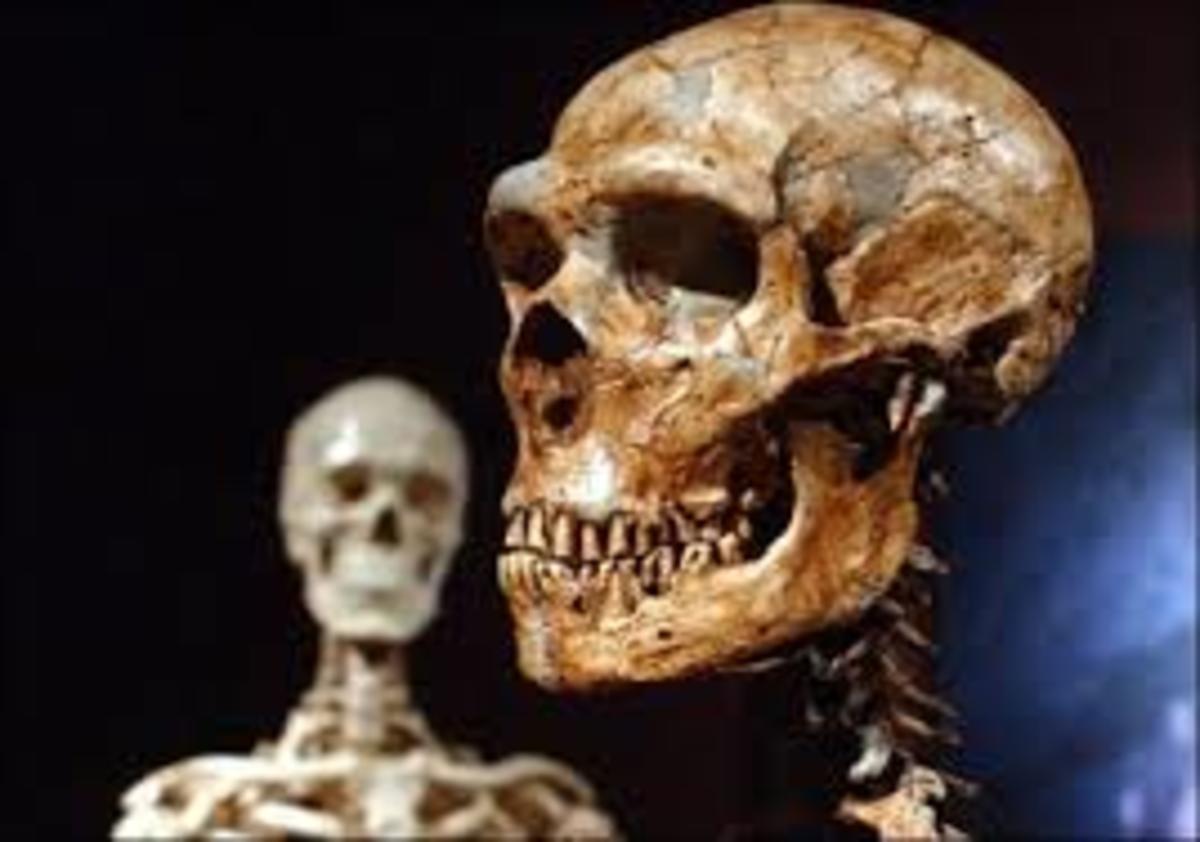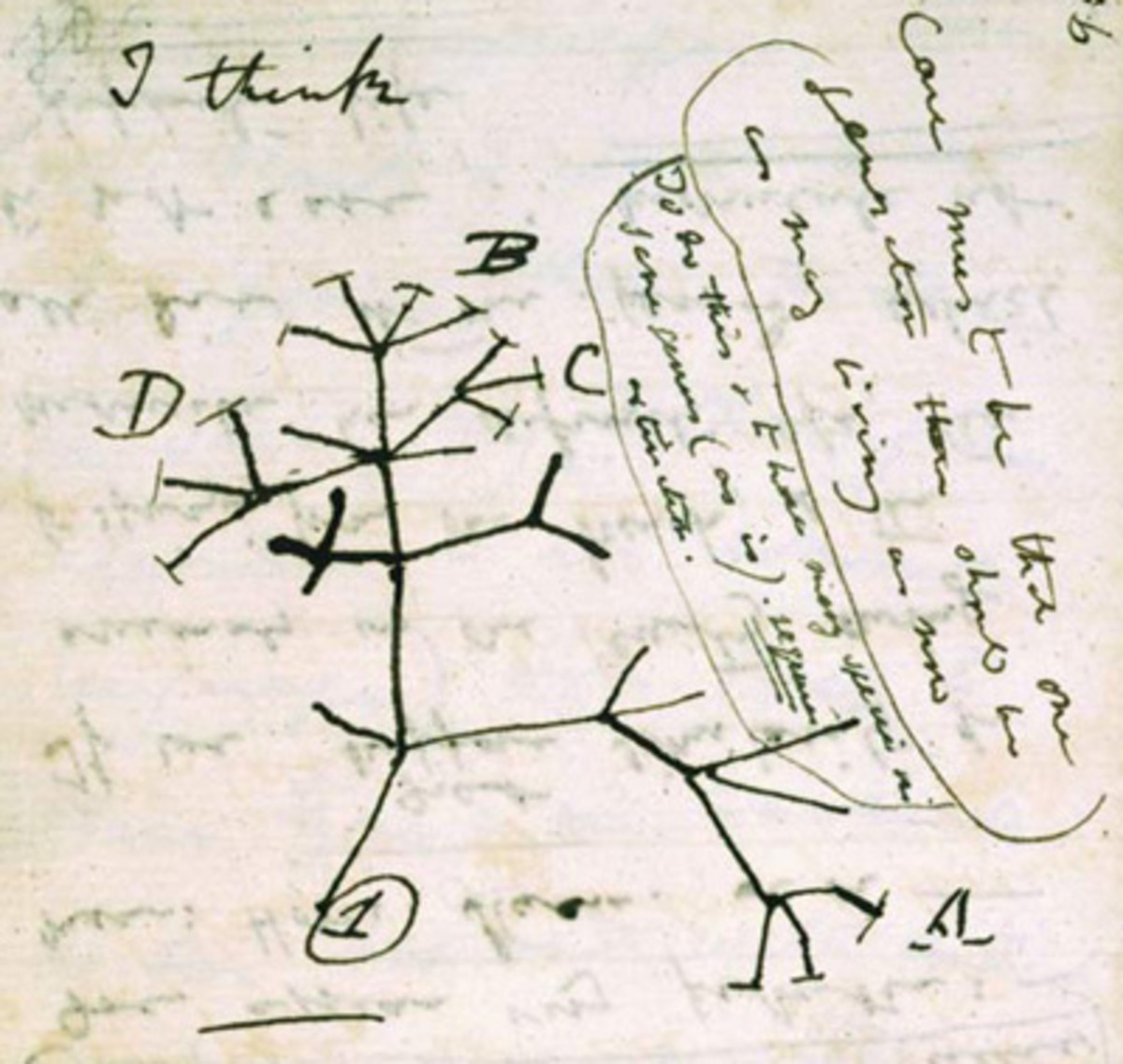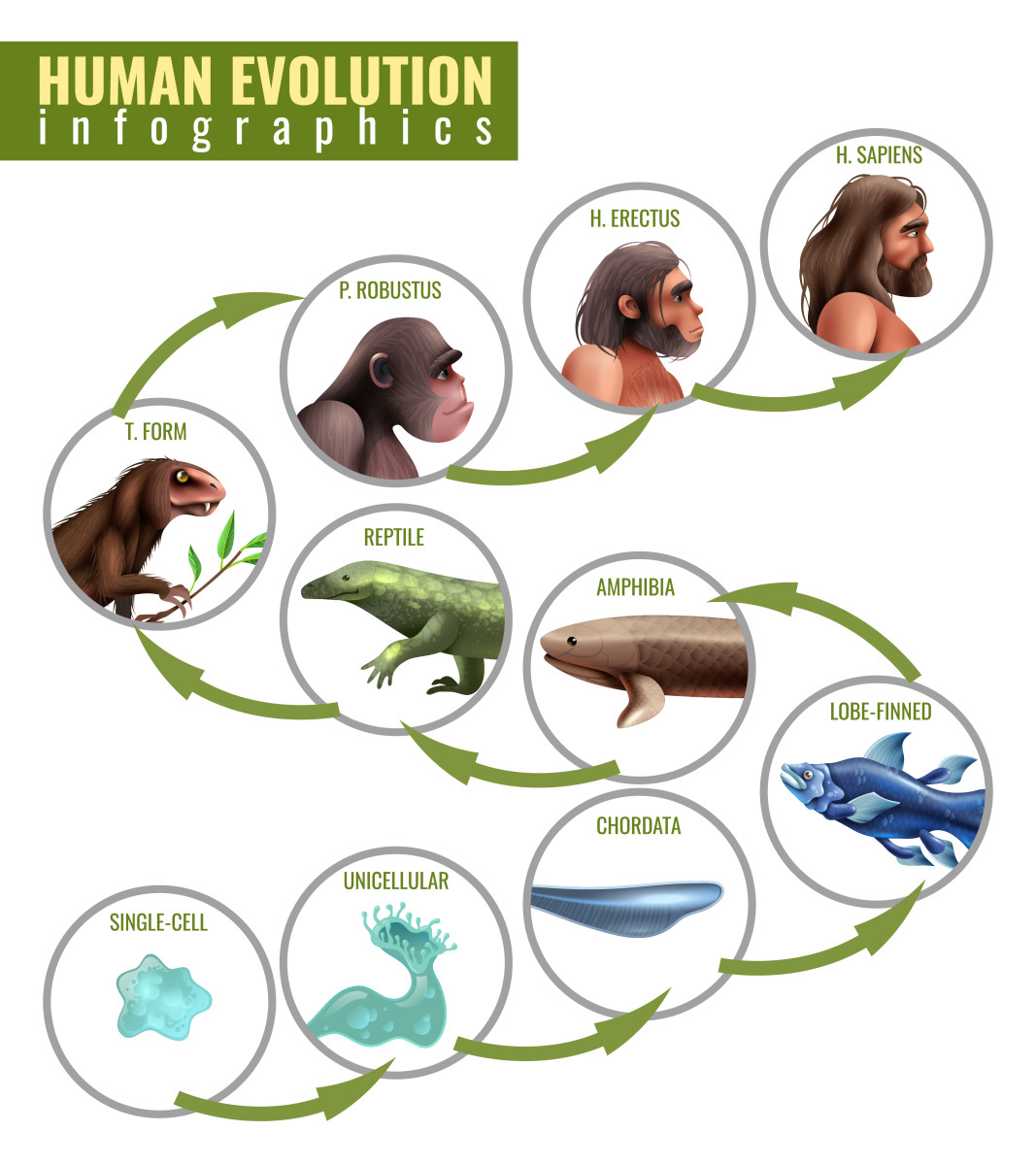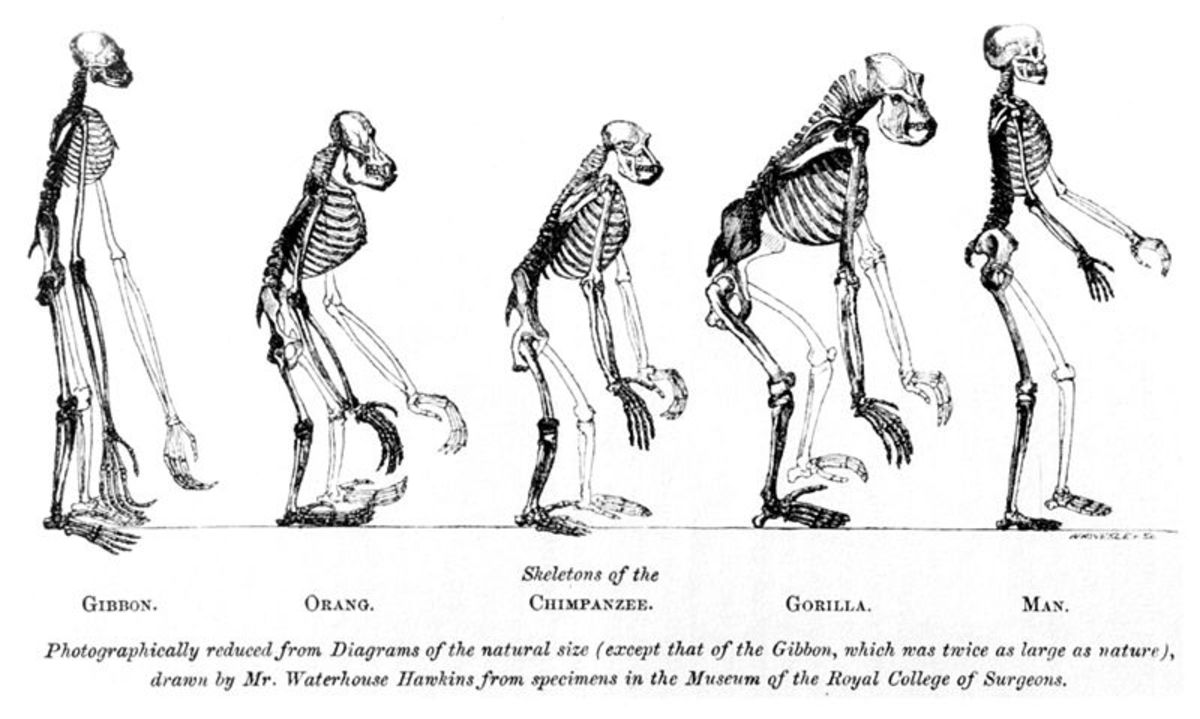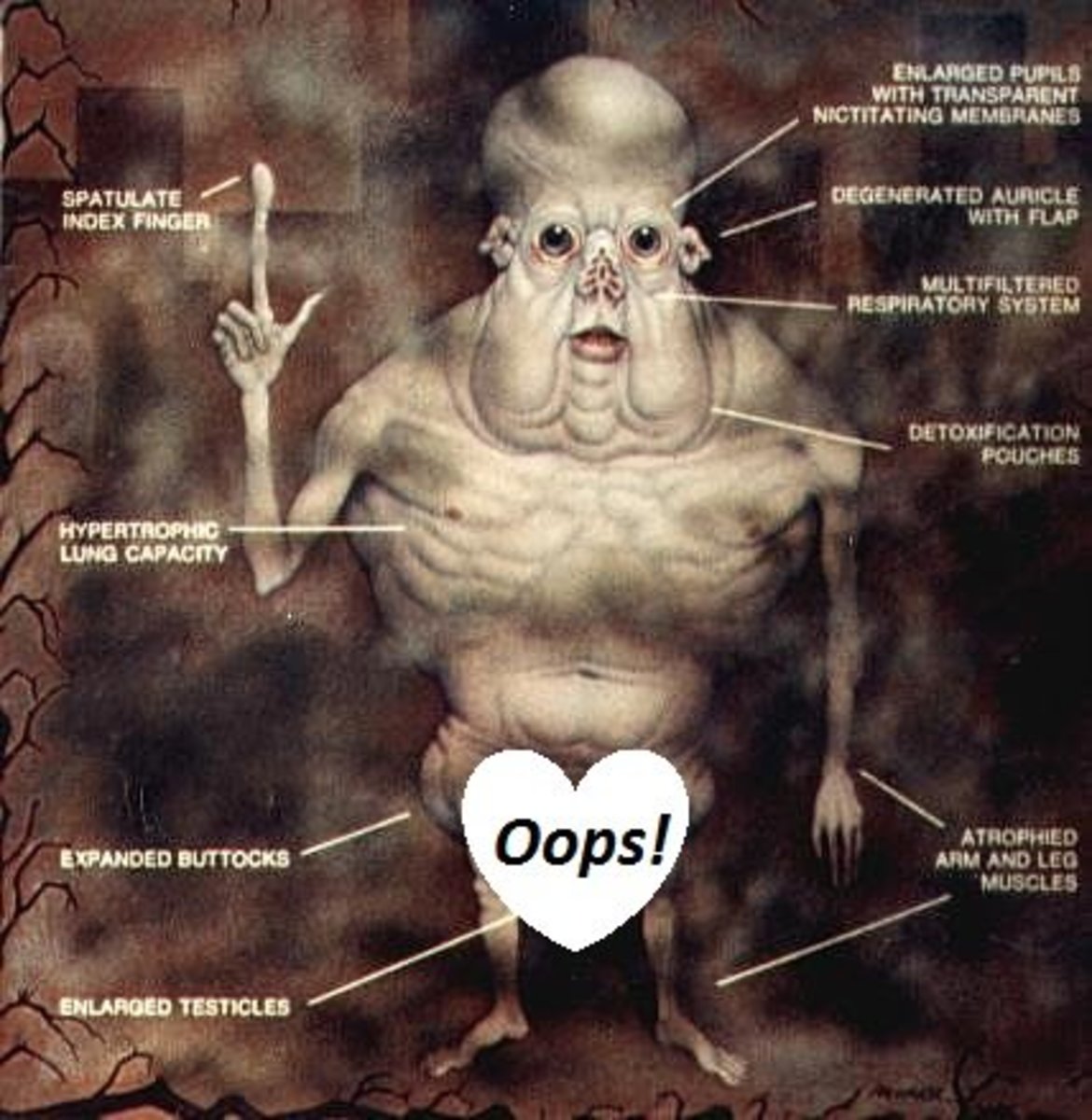The Facts of Life: Reproduction and Evolution
New Developing Life ...

How Life Developed on Earth...
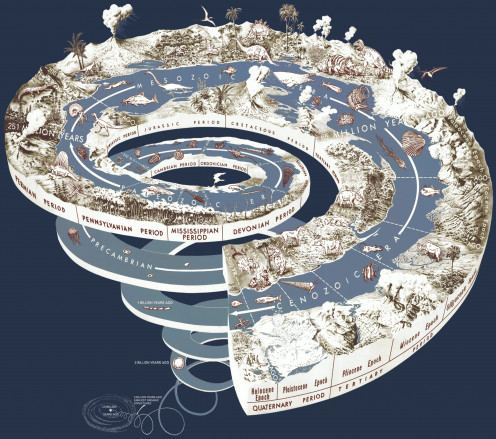
Where Did I Come From?
An alternative way of looking at the Evolution - Creationism controversy.
*
Where do babies come from?
Inside Mummy's tummy.
But how do they get there?
Well ....
These are very big questions, usually posed by very little people.
Another is: does everyone really die?
*
Where did I come from?
We all seem to want to know the answer to this question.
Was there really a time when I simply didn't exist?
Was there really a time when I might never have existed?
Will there be a time, again, when I shall not exist?
Yes!
Thence, from the personal to the general:
Where did life come from?
What was the first life like?
Who were the first ever people?
Where did they come from?
Where did the Universe come from?
How did the Earth, sun and moon get here?
Etc, etc, etc.
Humans are curious beingsand they want answers to their questions.
'Science' can provide many answers, but, where it cannot, is that where 'God will provide'?
Human Sperm
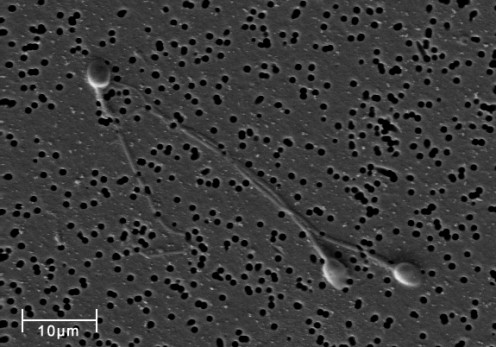
Human Sperm Cell - Diagrams
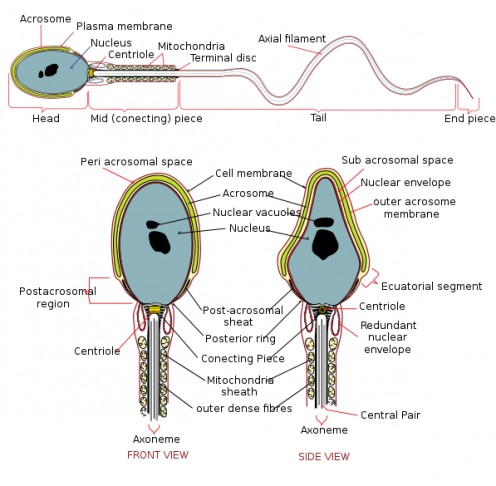
Human Ovum - Surrounded by Corona Radiata
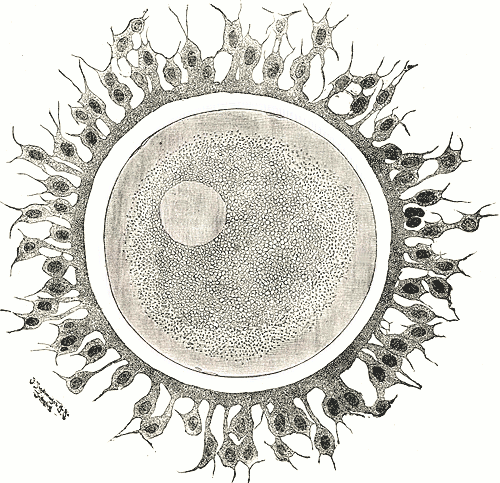
The 'Facts of Life'
The story is pretty much the same for all mammals, but I shall discuss humans here.
This a simplified explanation for a very complex phenomenon ~ the biology of human reproduction.
*
Eggs and Sperm ~ human reproductive biology
Sexually mature males produce an apparently unlimited supply of spermatozoa.
The word 'sperm' comes from the Greek word for a seed.
Sperm are single-cell gametes, which develop in the male testes.
Under a microscope, sperm look a little bit like tadpoles.
Females are born with a limited number of roundish single-cell gametes called ova ~ ie eggs.
Ova are contained within the ovaries
In sexually mature females, the ovarian follicle releases one egg per month. (Occasionally more than one egg may be released.) This is called ovulation.
The male reproductive cell is much smaller than the female reproductive cell ~ only 5 µm by 3 µm, but with a tail 41 µm long.
The ovum is a large cell, measuring 0.12 mm in diameter.
*
It takes both knowledge and imagination to appreciate that a sperm and an egg could produce a new child.
Human Sperm - Stained
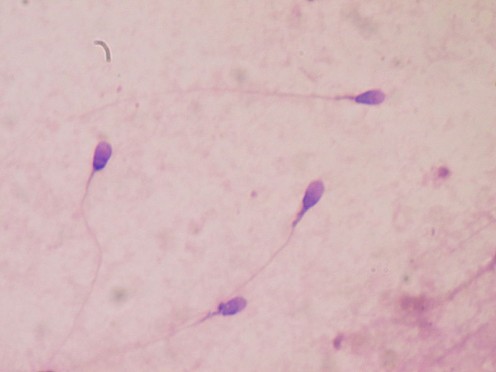
Fertilisation: 'Zygote' to 'Embryo'
If a mature male and a mature female mate ~ ie. indulge in sexual activity ~ at the right time of the month, when the egg is ready, then the many sperm, which are released, will instinctively aim to fertilise that egg. Fertilisation does not always take place, but, when it does, two single cell gametes will join together to form new life.
After the fusion of the two gametes ~ one sperm and one ovum ~ the newly fertilised egg will become 'implanted in the female's uterus and, all being well, it will divide and then grow and develop until it becomes an embryo ~ and, eventually, a new baby..
Sperm Cell Fertilizing Egg Cell
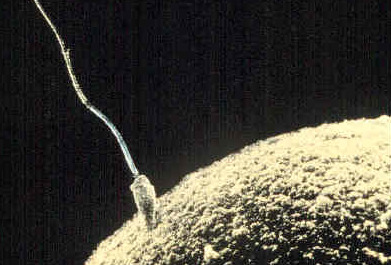
Haploid and Diploid cells
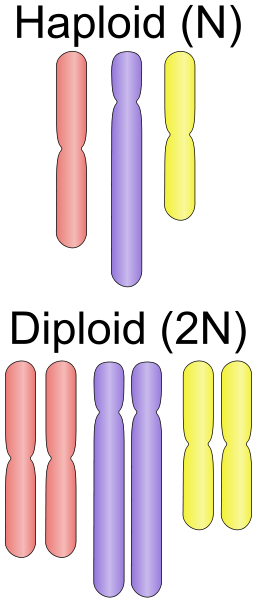
Human Embryo - Eight Cells
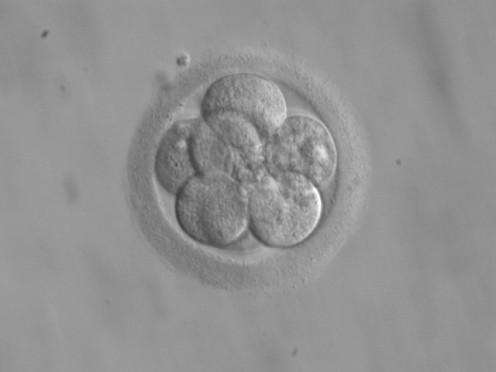
Cells
Human somatic eukaryotic cells ~ ie the cells which make up our bodies ~ are complex structures surrounded by a membrane and they contain 23 pairs of homologous chromosomes; that is 46 chromosomes in all. They are, thus, 'diploid'.
*
'X' and 'Y' Chromosomes
Human sex cells, however, are 'haploid' ~ they each only contain one set of chromosomes; that is 23 chromosomes in all.
When sperm and ovum fuse, a new cell is produced which contains a complete set of chromosomes ~ 23 pairs; 46 chromosomes in all. It is, thus, diploid.
Sex-determination chromosomes are called the 'X' and 'Y' chromosomes.
Two 'X' chromosomes (XX) result in a female child.
An 'X' and a 'Y' chromosome (XY) will result in a male child.
Female ova always carry an 'X' chromosome.
Males determine the sex of their offspring, since individual sperm may bear either 'X' or 'Y' chromosomes.
A fertilised egg ~ ie one where ovum and sperm have fused to form a single cell with a full set of chromosomes ~ is known as a zygote.
Thus the zygote contains half of its DNA from its mother and half from its father. Since it has two sets, it is classed as 'diploid'.
Mitosis and Cytokinesis
The 'zygote' cell will then divide ~ or cleave ~ quickly, to form new cells, via processes known as 'mitosis' and 'cytokinesis'.
Each new cell will contain identical chromosomal material. The process repeats. Thus the new life develops into a multicellular 'embryo'.
*
An 8-celled embryo looks nothing like a child, yet parents may already consider it to be their 'baby'.
Mitosis is ...
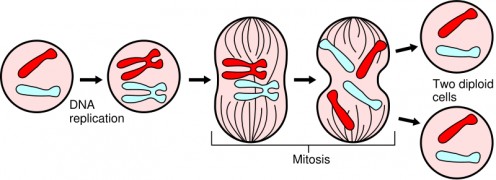
Definition of 'Mitosis'.
According to the online Oxford Dictionary, 'mitosis', is 'a type of cell division', resulting in 'two daughter cells, which each have the same number and kind of chromosomes as the parent nucleus'. This is 'typical of ordinary tissue growth'.
http://oxforddictionaries.com
Embryogenesis in Humans
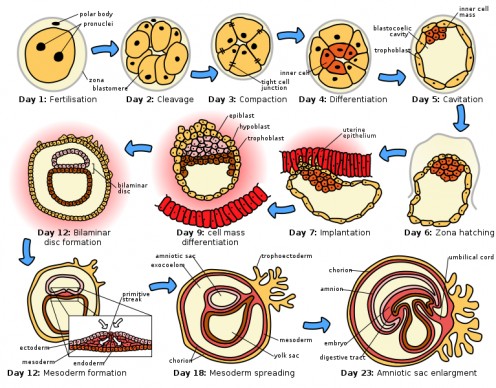
'First Stages of Segmentation of Mammal Ovum': a. Two-cells b. Four-cells c. Eight-cells, etc.
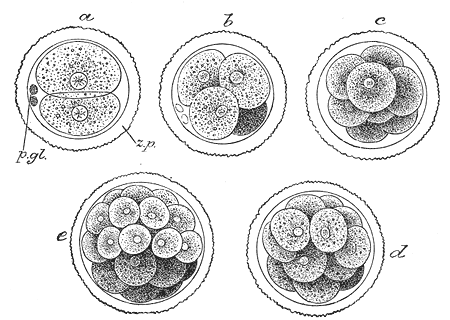
Human Embryo: Head of 4-Week Embryo
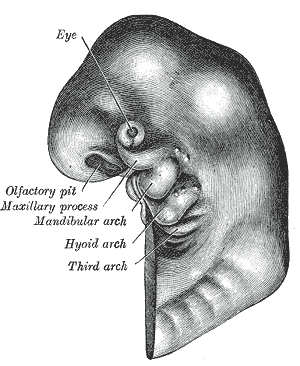
Human Embryo - 4 weeks after fertilization / 6 Weeks Gestation - Size: 1/8 inch. Weight: Less than 1 gram
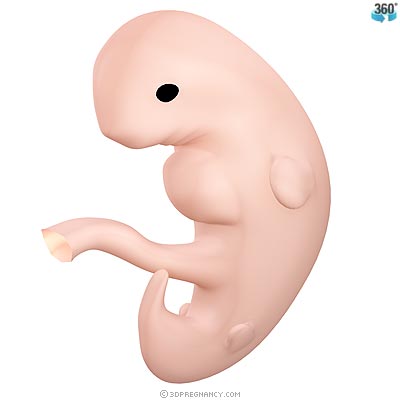
Haeckel's Work on Various Embryos: Is there any truth in it?
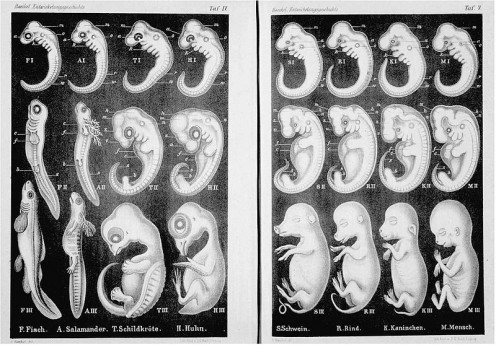
'Embryo' to Newborn Babe
After 'cleavage', the embryo then grows and develops, until, at around nine weeks after fertilization, it is known as a fetus (foetus).
At this stage, according to Wikipedia, it measures about 30 millimetres 'from crown to rump', and 'weighs about 8 grams'.
After five months, the fetus measures about 20 cm.
By the end of the pregnancy ~ at around nine months ~ the baby may measure about 53 cm at birth.
Thus, within nine months, a new individual is created.
A new person arrives on the planet ~ hopefully to be loved and cared for.
*
From two haploid cells ~ a nondescript egg and a minuscule, tadpole-like sperm ~ which just happened to find each other, a zygote is formed.
This zygote looks nothing like a human.
If the zygote were to become visible, no-one would ever guess that this was a potential baby.
Slowly, gradually, the cells divide and develop, until it becomes clear that a new little human is growing within its mother's womb.
In its early stages, one might be forgiven for wondering if it might turn into some other ~ non-human ~ life form, which it might then resemble.
* * * *
Ernst von Haeckel
Ernst von Haeckel (1834 – 1919) is famous for having produced a selection of embryological drawings, apparently showing early similarities between different species.
Sadly this work, which was at the centre of a huge controversy, is of little use to the non-specialist, because it is difficult to know which elements, if any, are reliable.
It has been claimed that Haeckel was found guilty of fraud, but, according to Wikipedia, 'there does not appear to be an independently verifiable source for this claim'.
Furthermore, Richardson and Keuck, in their work "Haeckel's ABC of evolution and development" wrote: 'While some criticisms of the drawings are legitimate, others are more tenditious'.
http://en.wikipedia.org/wiki/Haeckel
Left: Human Embryo: 4 weeks after fertilization / 6 weeks gestational age. Right:Human Fetus: 8 weeks after fertilization / 10 weeks gestational age
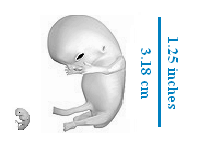
10-Millimeter Human Embryo: 5th week / 7th week of pregnancy
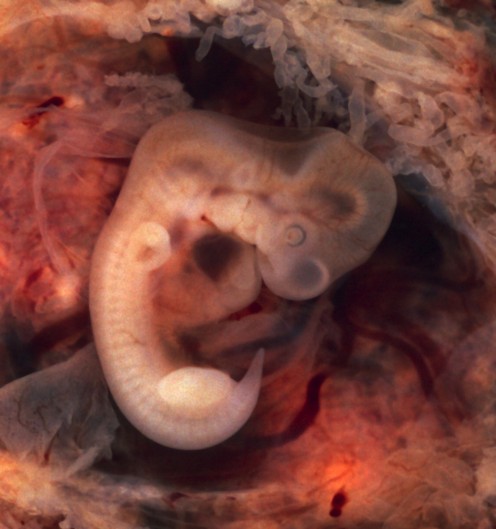
Conception - Birth - Change - A 'Magical' Phenomenon
Hundreds of babies are conceived every second, but, if this were not a regular occurance, and if we were not used to witnessing it, then it is likely that we simply would not believe the process to be true.
How could a beautiful little baby possibly come ~ apparently ~ from nowhere?
In the past, when the links between sex and reproduction were not known, or not understood, then this must have seemed to be a very mysterious ~ even magical ~ process.
Even so, it is still amazing that two haploid cells, once joined, could divide and grow and make a new human ~ a person who previously did not exist.
It is equally fascinating that the new little human baby should slowly disappear, as a child grows in its place, and that the child should disappear, as a young adult grows in his place, and that this young adult, too, should be replaced by ever older adults until, finally, death claims the individual, and s/he, once again, ceases to exist.
Human Embryo: Approximately 6 weeks from conception / 8 weeks estimated gestational age
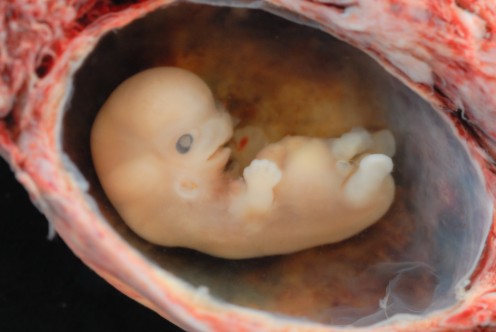
Human Embryo: seven weeks / ninth week of pregnancy'
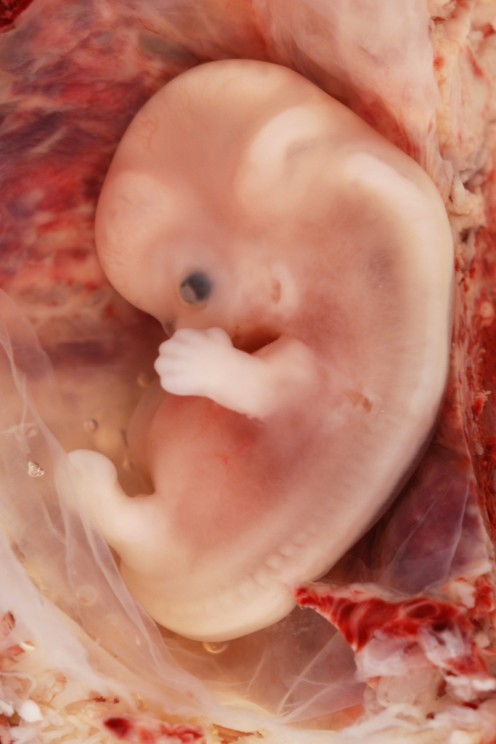
The Potential of One Single Cell
Clearly a single-celled potential human can develop from two single haploid cells, which might otherwise have simply died off.
Clearly, a fertilised zygote can develop from a tiny, barely noticeable single cell, which resembles nothing, into groups of cells, which also resemble nothing very much.
And clearly, these cells can develop, through various different stages, until they take on obviously human form.
A single cell can become recognisably human in less than nine months of pregnancy.
A new baby can change so many times, within it's life, that s/he might become unrecognisable from one year to another.
The centenarian is nothing like the baby it once was ~ and certainly nothing at all like the zygote which started it all.
Yet the vital material was all there, passing on the traits of the parent and grandparents and ready to form arms and legs; heart and lungs; eyes, nose and mouth.
It's a non-supernatural miracle.
It would seem unbelievable, if we did not know that it were true.
Similarly, evolution seems unbelievable to many.
Human Embryo: 8 Weeks
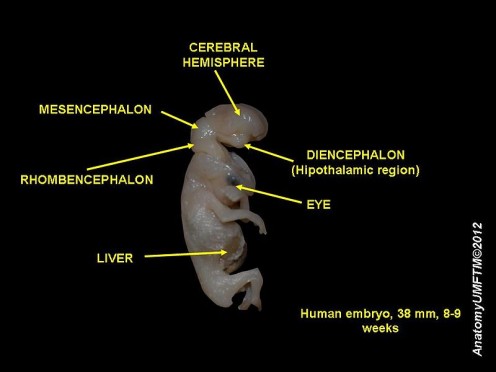
Human Fetus: 8 weeks after fertilization / 10 weeks gestational age

From Single Cell
It takes only nine months for a baby to develop from a single cell to a 'bundle of joy'.
It takes only one lifetime for a thriving new baby to change completely into a dying old man.
Within around 100 years, a person may go from non-existence to existence to non-existence again.
Though the changes might otherwise be barely comprehensible to us, we can witness them ~ so we simply accept them.
However, it takes many, many, many lifetimes for a primitive single-celled organism to evolve into a modern human. Thus we cannot witness this phenomenon first-hand. Consequently, many people find it hard to accept.
Many refuse to believe it and many reject the idea, without ever giving it a real chance.
But, as pregnancy and childbirth show, though something might seem unbelievable, this does not, necessarily mean that it is not true.
Human Embryo: 8-9 Weeks (38 mm)
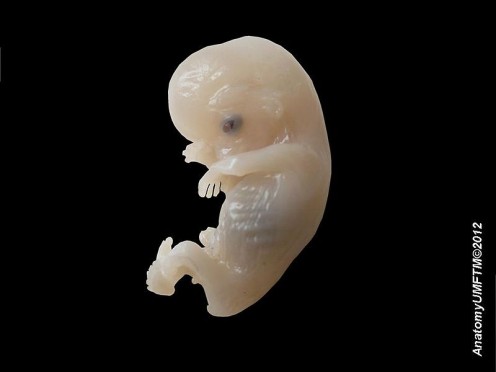
Human Fetus: 3 Months (about 12 weeks)
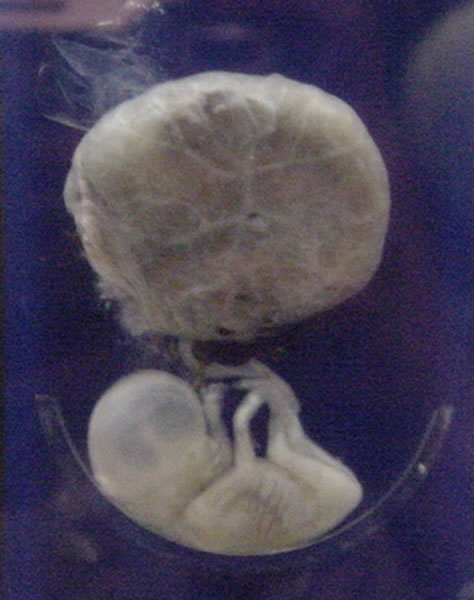
Modern Knowledge
Nowadays, because of better education and scientific advances, most of us know a lot more about the intricacies of birth and death.
We understand sexual reproduction.
We understand how cells work.
We know that they develop and grow in youngsters.
We know that our cells are forever being replaced.
We know that, as each organism ages, the replacement process will work less well and we know that, as inferior cell copies are produced, the person will degenerate with age, until they die.
In the distant past, few people, if any, would have understood this ~ just as they did not understand thunder and lightning, or eclipses of the sun and moon.
Human Fetus in the Amniotic Sac
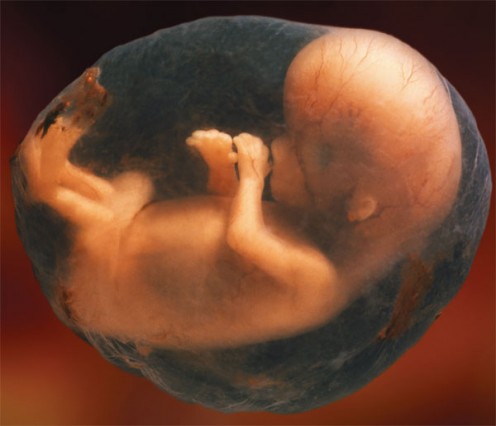
Human Fetus: Ultrasound Image (3 in / 7.6 cm)
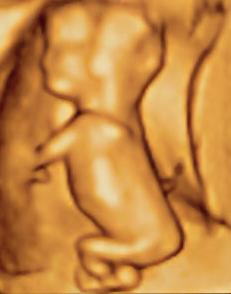
Human Fetus - 'Sucking his thumb'
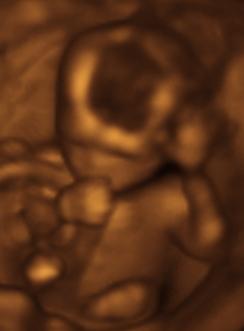
Seeking Answers
Answers were sought and found in the supernatural.
God was the solution to all mysteries.
Stories developed ~ probably passed on by shamans and priests ~ which attempted to explain the apparently inexplicable.
*
Where did I come from?
~ God made you.
Was there really a time when I simply didn't exist?
~ You always existed in God.
Will there be a time, again, when I shall not exist?
~ You will return to God.
Where did life come from?
~ God created it.
Where did the first ever people come from?
~ God moulded them out of clay and breathed life into them.
How did the Earth and the sun and the moon and the entire universe get here?
~ God made them.
Why do we have thunder and lightning, or eclipses of the sun and moon?
~ They are messages from God.
*
'God' was the only answer they had, because even the kings and lawgivers and priests were more ignorant of certain scientific knowledge than many school children are today.
And, if the people were told the Biblical stories, then they might accept them either as fact, or as allegory.
Having the people believe the stories as fact, because they were the word of God, would be more empowering to the leaders, who passed on these tales.
Human Fetus - Ultrasound
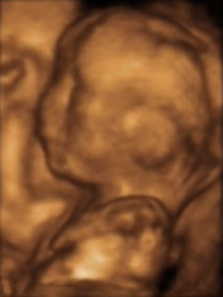
Human Fetus: 18 weeks after fertilization / 20 weeks gestational age

Human Fetus: 38 weeks after fertilization / 40 weeks gestational age
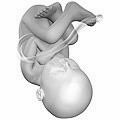
Answers Found?
Atheists will say that God is no longer required to answer any questions.
Agnostics think that it is impossible to know the answers to certain questions, at this time.
Some Believers will say that God and science can co-exist. They even accept the science of evolution, because they consider Genesis to be allegorical.
Some Believers say that the Genesis story has to be literally true, because the Bible is God's word. Thus man did not develop from a single-celled creature, because he was formed, by God, out of earth or clay. Thus evolution must be a lie.
As for the existence of God, the truth is that no-one really knows ~ not for certain.
Atheists are people, who do not 'know', but who believe that God does not exist.
Christians are people, who do not 'know', but who believe that God does exist.
Agnostics simply admit that they do not know.
Some agnostics may have tendencies towards atheism; some may have tendencies towards belief.
Whatever people believe, as regards the supernatural, humans and other life-forms do exist, here on Earth, and life did begin and develop, somehow.
One might believe that God made us, or one might not.
One might believe that God is as described in the Bible, or one might not.
This has to depend upon faith.
Human Newborn
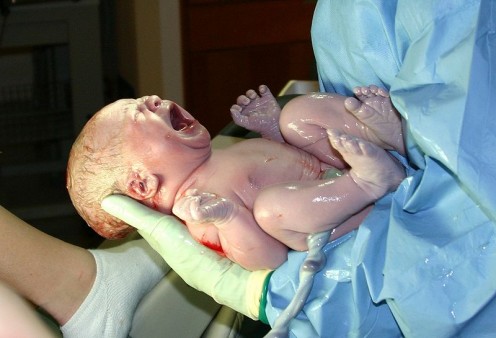
Single-Cell Organisms Exist Today - Eg. The Amoeba
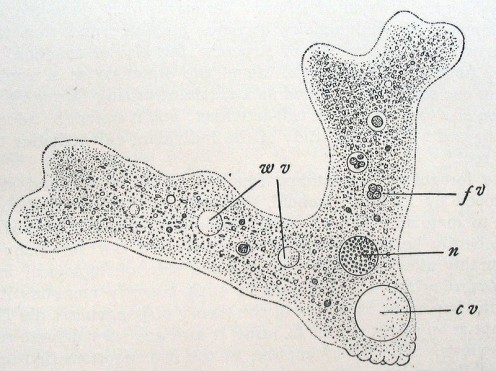
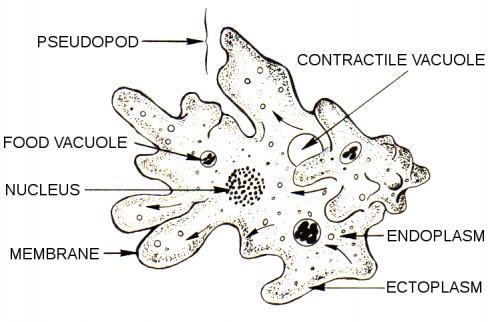
Evolution and Faith?
Some Believers think that acceptance of evolutionary theory also depends upon faith.
Well, almost everything that we accept has to depend upon faith, to a certain degree.
We cannot all know everything about everything, so we have to rely upon experts ~ and experts are not infallible.
Meteorologists may get the weather forecast wrong.
Doctors may misdiagnose illnesses.
However, though doctors and meteorologists may sometimes make mistakes, this does not mean that everything every doctor or meteorologist says is incorrect.
It is not foolish to continue to consult the weather forecast, if one is going out for the day, or to consult a doctor, when one feels ill.
Relying on these experts ~ having 'faith' in them, is not at all the same thing as as believing in the amazing tales told in ancient times.
Accepting the information provided by science is not a religion.
Accepting that gravity will prevent us all from flying off the earth is not a religious belief.
Accepting the abundant evidence of evolution is not blind faith.
Evolutionary theory certainly is not the work of the devil, nor is it the dogma of an alternative religion.
Postpartum human baby - covered in vernix
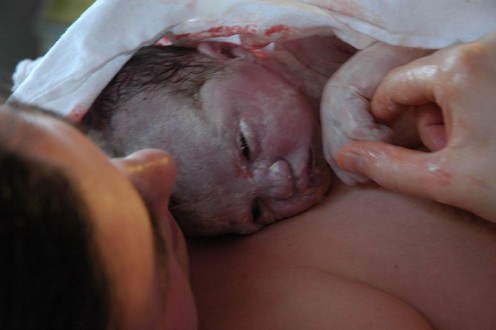
Newborn Baby with Umbilical Cord Still Attached
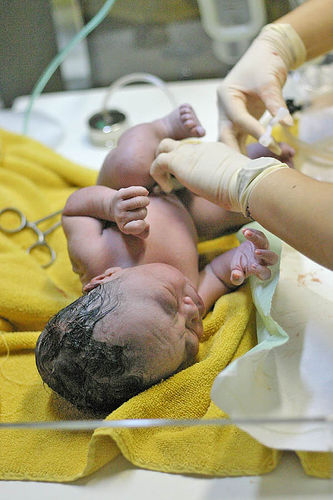
Theories and Facts
Even the experts do not yet have the full story on evolution, and certainly some of them may have made mistakes.
That is how science works. It is an ongoing study. It doesn't just stop. It suggests hypotheses, tests them and draws conclusions ~ which will continue to be tested, as new information becomes available.
However, just because we do not know everything that there is to know about evolution does not mean that it is not true.
A 'scientific theory' is not a suggestion or a hypthesis, it is a tested 'fact'.
Because most of us do not use scientific jargon, many do not understand the implications of this. In general parlance, we may use the words 'hypothesis'. 'theory', suggestion', etc, interchangeably. One cannot do this in the scientific field, where these words have specific meanings. Even the word 'fact' is different there, so a scientist's 'theory' is a 'fact' to the rest of us.
Yes, evolution is a fact of life.
One may believe that it was set in motion by God, or not, depending upon one's religious faith, or lack thereof, but the evidence for it definitely exists.
Newborn Baby: 1 Hour After Birth
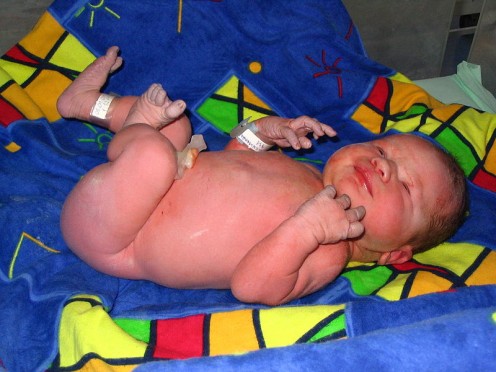
Single cell to baby to old age.

A Parallel Phenomenon - human reproduction and development and human evolution
We humans develop ~ slowly ~ from two haploid cells, to one diploid cell. For every one of us, a single cell then develops to become the people who we are today.
Furthermore, all life on earth developed ~ very, very, very slowly ~ from single cells, to become the myriad life forms we see on Earth today.
It may, perhaps, be considered a parallel phenomenon.
The Alternative: Adam and Eve?
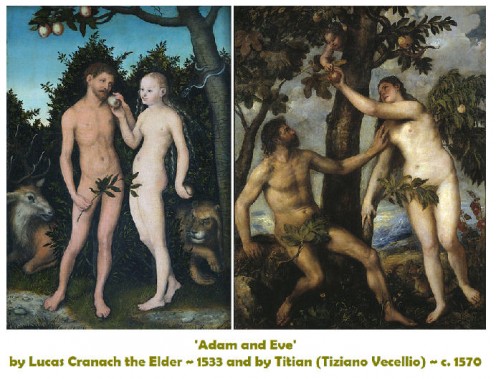
Richard Dawkins
A Nine-Month 'Evolution'
In his excellent book on evolution ~ 'The Greatest Show on Earth’ ~ Richard Dawkins recounts an amusing and thought-provoking anecdote.
The story concerned Professor J B S Haldane and a woman, who challenged him, at a lecture that he was giving.
Could a single cell ever evolve into a complex human, no matter how much time was available?
Haldane comfirmed that a single cell could most definitely, and obviously, develop into a complex human: “Madam", he replied,"you did it yourself, and it only took nine months".
*
John (aka Jack) B S Haldane (1892 – 1964) was an evolutionary biologist and geneticist.
These and Other Books Available From Amazon

My 'Evolution' Articles on HubPages:
Sources / Relevant Links
- Ploidy - Wikipedia, the free encyclopedia
- Fertilisation - Wikipedia, the free encyclopedia
- Ovum - Wikipedia, the free encyclopedia
- Sperm - Wikipedia, the free encyclopedia
- Embryo - Wikipedia, the free encyclopedia
- Ernst Haeckel - Wikipedia, the free encyclopedia
- Evolution - Wikipedia, the free encyclopedia
Where Did I Come From? Where Did We Come From?
From This to This - Barely Believable!

Conclusions - Human ancestors? Adam and Eve or primitive single-cell organisms?
Every human baby began as a single-cell zygote.
Were the earliest ancestors of humankind also single-cell organisms?
Or were the God-created humans, Adam and Eve, our earliest ancestors?
Or, indeed, are the names 'Adam' and 'Eve' just symbolic names for those earliest single-cell organisms?
*
It seems, to me, that the book of Genesis provides an allegorical explanation for the beginning of life. At the time, it would have helped to provide answers to the questions that all humans tend to pose.
Genesis does not negate any truths about evolutionary theory, because, in those days, it is unlikely that anyone would have been able to propose or understand such a theory. Allegory was all they had.
*
I hope that all readers will enjoy this article, but I especially hope that those, who currently reject evolutionary theory, on the basis that a primitive single-celled creature could not possibly 'turn into a human', will think again, after looking, 'with new eyes', at the ways in which an individual human being changes, constantly, between conception and death ~ and develops from a single cell into a multicellular complex organism.
In the Beginning - Is this really how it all began?
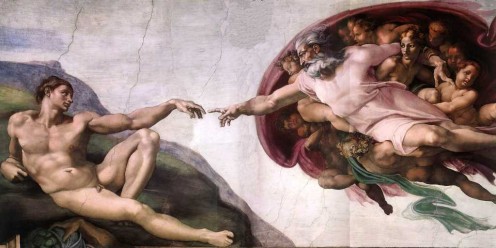
Sources, Copyright Etc
To supplement and check my own knowledge, I have consulted, for the most part, Wikipedia. Links have been given to the appropriate pages.
Specific quotes have been credited accordingly.
Images have been obtained from Wikimedia Commons and I understand that there should not be any problems, using them for this article. (Click on some of the images for a larger view).
This article ~ ie my own words ~ are copyright. All rights reserved.
Tricia Mason
Single-Cell Beginnings






